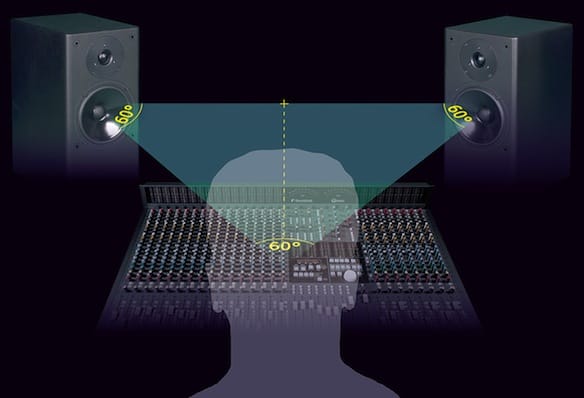
Image credit: SOS.
Audio Signal Processors
Audio signal processors come to home sound systems by way of professional applications. Like many sound production developments of the last 80 years, audio signal processing was introduced in radio broadcasting. Processing an audio signal is to alter it, generally electronically, adjusting different parameters among the wavelength signals, creating sound effects. There are more general effects used to create presence, or doubling a voice, and then there are effects that twist the tonal signature into synthetic modulations that can be controlled and contoured.
A brief list of effects would include tonal boost, such as treble or bass, compression, tremolo, reverb, echo, phase shift, flanger and envelope follower. Guitarists will be familiar with most of these, as well as with the concept that states that every effect is basically a filter of the untempered sound, and thus is ultimately contradictory to producing the greatest tonal response from a sound source.
Signal processors break into two types: digital and analog. Analog audio signal processors generally use electrical circuits to reconfigure the shape (and sound) of the sound waves, while digital signal processors apply numerical algorithms to create manipulations of the ones and zeros that comprise a digital musical signature.
As one might expect, a search for audio signal processors reveals a preponderance of digital gear, with analog gear being less prevalent and some assuming gourmet distinction and prices. Priceonomics will help you to decide on A.S.P.s and make the choice for you!
There is a netherworld that crosses over the territory between signal processors, preamplifiers and digital audio converters. From this ill-defined level, a number of products are available to maximize bass response or produce vacuum-tube warming of the sound at the input stage.
The Alesis tube-driven microphone preamp presents an affordable entry level investment for a DJ or live music performance. At around $70, it applies the legendary (from guitar amps) AX7 vacuum tubes, and a two stage volume approach, drive and gain, which permits one to control distortion.
Alpine and Audio Control offer digital signal processors for mobile applications, with many available for $150-$250. These units are designed to optimize response in car stereo systems.
ART and BBE both make digital signal processors for sound enhancement, again in the $150-$250 range. These units are professional gear for live music presentations, and begin to use XLR cables, which provide for low-impedance, in addition to the standard ¼ inch phone plugs associated with analog music sources.
The JBL MS8 system integration digital sound processor, $750, in the middle of the spectrum, features automatic equalization and time correction, as well as clean amplification. It powers the vehicle with eight outputs, providing potential for a full 5.1 (two front, two back, one center speaker) configuration, or eight distinct channels.
In short, most analog and digital signal processors are for professional sound enhancement and vehicular applications. At the level in which effects ultimately filter the signal path, attaining a pure signal precludes the introduction of effects units. Priceonomics recommends readers research equalizers for home applications.



